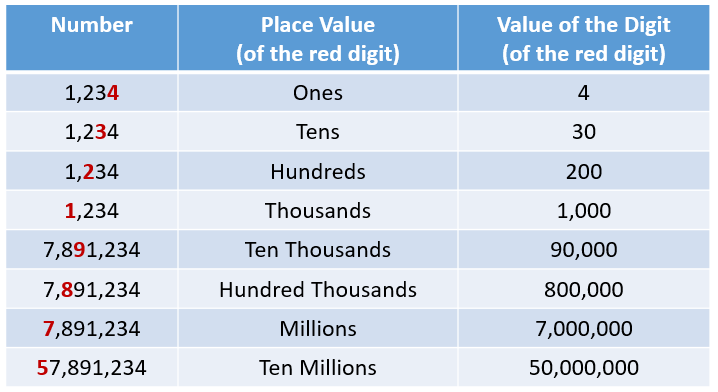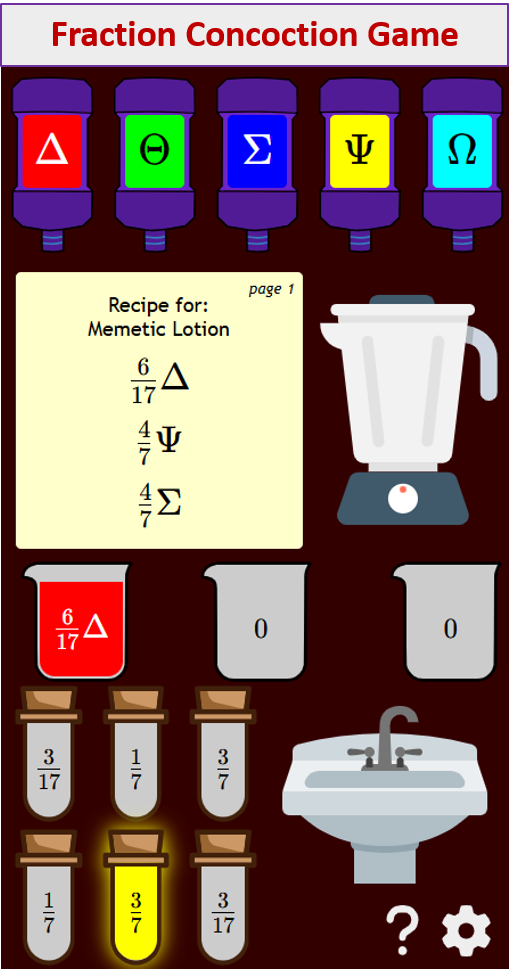Place Value Chart
Related Pages
10 Times The Value
Adding Decimals Using Place Value
More Numbers Lessons
In these lessons, we will look at place values in whole numbers and decimal numbers. We will learn
- place value chart for whole numbers,
- place value chart for decimals.
For more practice in place values, you could go to our free Interactive Math Zone where you can generate worksheets according to your needs and get them marked online.
A place value chart is a visual tool used to understand the value of each digit in a number based on its position. It organizes digits into columns, each representing a specific power of ten. This system is fundamental to how we read, write, and understand numbers in the base-10 (decimal) system.
The decimal point separates the whole number part from the fractional part. The whole number part is to the left of the decimal point. The fractional part is to the right of the decimal point.
Place Value Chart For Whole Numbers
Each digit in a whole number has a place value, based on its position from the right, as seen in the following place value chart. Scroll down the page for more examples and solutions.

-
Place Value Worksheets
Ten and Ones (eg. 17 = __ ten and __ ones)
Count Tens & Ones (with pictures)
Count Tens & Ones (with place value charts)
Tens and Ones (eg. 73 = __ tens and __ ones)Add Tens & Ones (with pictures)
Add Tens & Ones (eg. 60 + 4 = )
1 more, 1 less, 10 more, 10 lessHundreds, Tens, Ones (eg. 536 = 500 + 30 + 6)
Expanded Form (up to hundreds)
Expanded Form (up to millions)
How to Use the Chart:
- Write each digit of the number in its corresponding place value column.
- The value of a digit is determined by the digit itself multiplied by its place value.
The value of a digit in the number is the digit multiplied by the place value.
The following table shows examples to distinguish between the place value of a digit and the value of a digit.

Place Values For Whole Numbers
Place Value Chart For Decimal Numbers
For decimals, the place value chart will include the decimal point and the positions after the decimal point. Digits to the right of the decimal point represent fractions (from left to right):as illustrated in the following table.

Remember that the place value after the decimal point is tenths.
Decimal Place Value To Thousandths
How To Determine The Place Value Of The Digits In A Decimal And How To Read Decimals?
Example:
How to read each decimal in words
- 0.6
- 0.05
- 3.8
- 15.001
Key Rules
- Moving Left: Each place is 10× larger (e.g., 10 ones = 1 ten).
- Moving Right: Each place is 10× smaller (e.g., 1 tenth = 0.1).
- Zero (0): Holds a place when no value is present (e.g., 205 vs. 25).
Why Place Value Charts are Important:
- Understanding Number Magnitude: Helps students grasp how large or small a number is.
- Reading and Writing Numbers: Makes it easier to correctly read and write large numbers and decimals.
- Arithmetic Operations: Essential for performing addition, subtraction, multiplication, and division, especially with regrouping (carrying and borrowing).
- Rounding and Estimation: A clear understanding of place value is crucial for rounding numbers to a specific place.
- Decimal Operations: Understanding decimal place values is key to correctly adding, subtracting, multiplying, and dividing decimals.
Try out our new and fun Fraction Concoction Game.
Add and subtract fractions to make exciting fraction concoctions following a recipe. There are four levels of difficulty: Easy, medium, hard and insane. Practice the basics of fraction addition and subtraction or challenge yourself with the insane level.

We welcome your feedback, comments and questions about this site or page. Please submit your feedback or enquiries via our Feedback page.